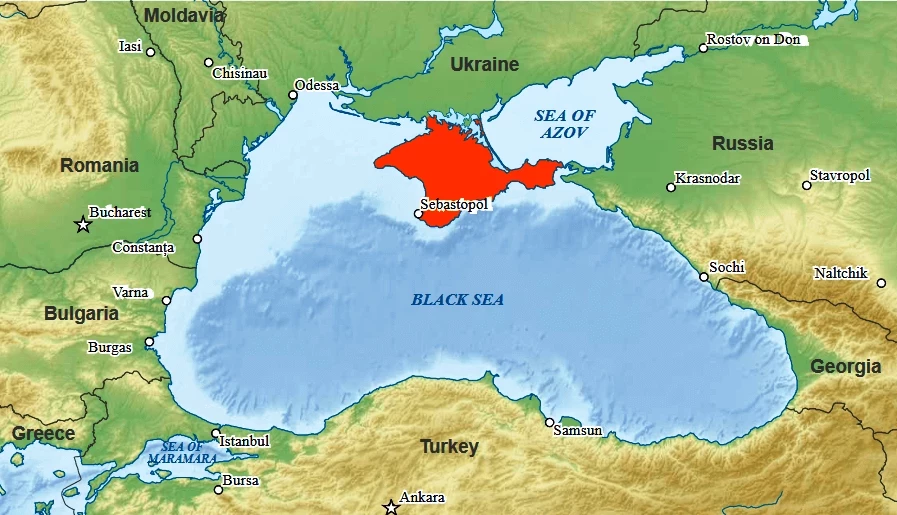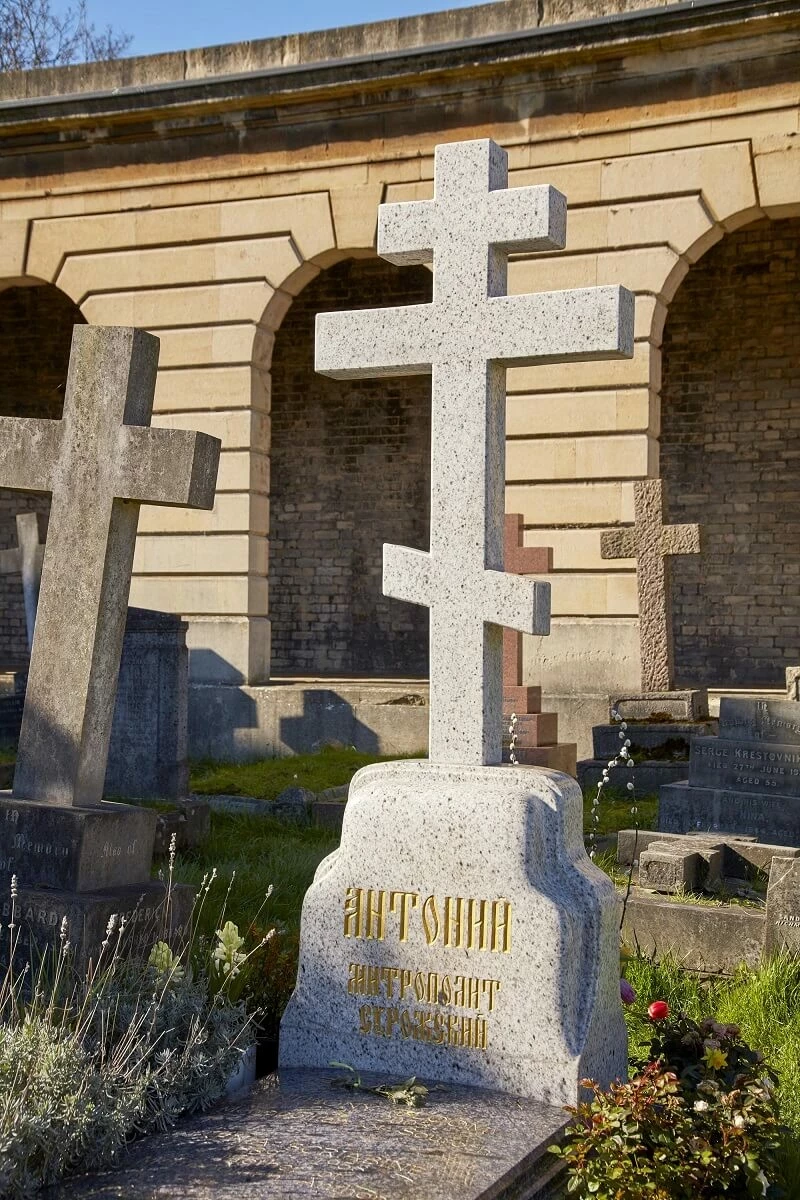
Metropolitan Anthony of Sourozh (1914-2003)
This Russian Orthodox leader’s grave is one of the most visited in the cemetery
André Borisovich Bloom, Metropolitan Anthony of Sourozh.
André Borisovich Bloom, Metropolitan Anthony of Sourozh, was the head of the Russian Orthodox Patriarchal Church in Great Britain and Ireland. He was well known and respected as a writer and broadcaster on prayer and Christian life.
Metropolitan Anthony lived an unusual life. The son of a Russian diplomat, he was born in Switzerland, spent his early childhood in the Middle East and went to school in Paris. He trained as a doctor there, and was a French Army surgeon in the Second World War. Meanwhile, he secretly became a monk in the Russian Orthodox Church.

'Metropolitan' is named after a part of the Crimea
After the war, Metropolitan Anthony was ordained as a priest and came to London. He began as a chaplain and rose to become the head of the Russian Orthodox Church in Britain. He led millions in worship around the world via the BBC Russian Service, and ministered to thousands in Britain.
‘Metropolitan’ is the title given to a very senior bishop. The diocese of Sourozh – the area Anthony was responsible for – covers all of Great Britain and Ireland. It was named after a part of Crimea that no longer had a bishop.

The traditional Orthodox cross
Metropolitan Anthony’s grave is marked by a traditional Russian Orthodox cross. You can see many of these three bar crosses in the cemetery, as well as Latin crosses with the more familiar single bar.
Both represent the cross on which Jesus was crucified. The Orthodox version includes a short top bar, which symbolises the sign that was nailed to Jesus’s cross. It read ‘Jesus of Nazareth, King of the Jews’, or ‘Iesus Nazarenus Rex Iudaeorum’ in Latin, often shorted to INRI.

The bar at the bottom is the footrest, on which the person being crucified stood. It is slanted because it’s said that Jesus kicked it out of place during his final moments. Some also suggest it points to heaven and hell, or to the good and bad thieves who were crucified either side of Jesus.